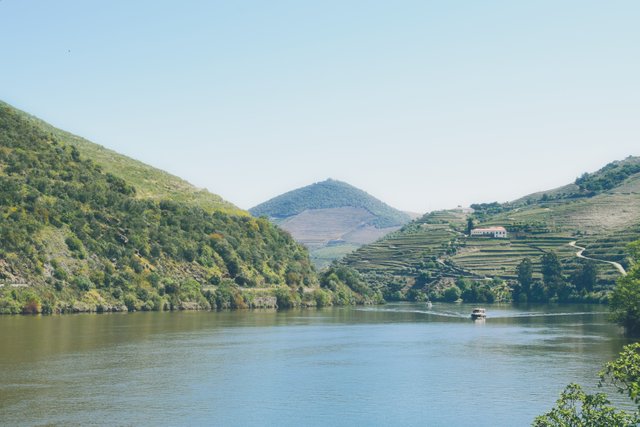📷Curiosities about the Azores Archipelago
Italy Community
✅ 1829 | The Defeat of the Miguelist Forces at the Battle of Vila da Praia
The absence of the Portuguese Royal Family in Brazil since 1808, the liberal revolution in Porto in 1820, and the death of King João VI in 1826 are key milestones in the complex political landscape of early 19th-century Portugal. The Cortes had already convened and declared Prince Miguel as the absolute King of Portugal, and his brother Pedro—who had declared Brazil's independence—as a traitor to the homeland, stripping him of his right to the throne. The political atmosphere, however, was deeply polarized.
Pedro, who had led the independence of Brazil and had become its Emperor, insisted that his daughter, Maria da Glória, was the rightful heir to the Portuguese throne. In a complex diplomatic move, Prince Miguel returned from exile in February 1828 to serve as regent for his underage niece, whom he also married. Though he swore to uphold the Constitutional Charter, Miguel pursued an absolutist political path, governing with violence.
By May 1828, a liberal military coup in Porto—supported by various regions in mainland Portugal, Madeira, and Terceira Island—failed. This led to the persecution of liberals, thousands of whom went into exile in France and England.
To pacify the islands aligned with liberal causes, a large fleet commanded by General Henrique Sousa Prego departed Lisbon in August 1828, occupying Madeira. The expedition then moved toward Terceira Island to quell the liberal rebellion, but rough seas prevented disembarkation. Instead, Sousa Prego established himself in Ponta Delgada as the new Captain-General of the Azores. His fleet returned to Terceira to impose a naval blockade, though some ships had returned to Lisbon. Despite the blockade, liberal forces in Terceira managed to receive reinforcements from France and England.
"Sailing with a favorable wind in a schooner, Count Vila Flor [General António José de Sousa Manoel Severim de Noronha] arrived at the port of Vila da Praia on the memorable day of June 22, 1829, evading the Portuguese blockade that, like an inexorable jailer, watched the island in vain."
On May 6, 1829, the warship D. João VI and the frigate Pérola set sail from Lisbon to reinforce the Miguelist blockade of Terceira. A formidable fleet was assembled—one of the strongest the Portuguese government had fielded in years. Departing from the Tagus River on July 12, 1829, the fleet joined other ships around São Miguel Island. Comprising 22 vessels with over 3,400 disembarkation troops and more than 2,200 crew and brigades, they soon set course for Terceira.
On the foggy and rainy morning of August 11, 1829, the Miguelist fleet—including the D. João VI, frigates Amazona, Pérola, and Dianna—appeared off the coast of Vila da Praia. More than 3,000 men and 370 pieces of artillery were ready. Naval bombardment lasted about four hours, with the royalist navy firing approximately 5,000 shots. The D. João VI alone fired 1,391 rounds.
Despite this intense bombardment, the first wave of 1,114 elite soldiers was unable to land, due to the fierce resistance from the liberal defenders, led by Major Menezes. Many troops were killed or forced to retreat.
"Hundreds of unfortunate soldiers floated in the sea or reached the rocks, only to be met by the bayonets of the volunteers who finished what the ocean had spared. 386 men were taken prisoner; the rest perished in the waters or from gunfire."
A second attempt was made hours later, with 18 boats carrying another group of soldiers. But this also failed:
"The flotilla moved sluggishly. A well-aimed shot from Lieutenant Salazar Moscôso and Captain José Luiz Vilarinho sank the first launch, carrying 120 grenadiers. The second met the same fate, and the third capsized in confusion. The rest hastily retreated."
These failed assaults became known as the Battle of Vila da Praia—or the Battle of Terceira Island—and marked a decisive liberal victory. Over 1,000 Miguelist troops perished, mostly drowned. The victory gave Count Vila Flor significant prestige and established Terceira as the liberal stronghold for the movement that would restore constitutional monarchy in Portugal.
Following this defeat, Miguelist forces were redistributed among other islands. Some naval vessels continued the blockade, but liberal reinforcements from France, England, and Brazil continued to arrive.
In spring 1831, a liberal flotilla secured the islands of Pico and São Jorge after minor resistance, and soon the Faial, Graciosa, Flores, and Corvo islands also aligned with the liberal cause. On August 1, liberal forces landed in São Miguel, defeating Miguelist troops in Ponta Delgada by August 3. Shortly after, Santa Maria also joined the liberal side.
A small but well-coordinated liberal navy had thus secured all the Azorean islands.
On April 7, 1831, Emperor Pedro abdicated the Brazilian throne in favor of his son Pedro II. After seeking support in France and England, Pedro arrived in São Miguel on February 22, 1832.
On March 3, 1832, he reached Terceira Island aboard the Princesa Real to personally lead the liberal cause and reclaim the Portuguese throne for his daughter, Maria da Glória (later Queen Maria II). He visited Faial and São Jorge, and by mid-1832, preparations were complete in Ponta Delgada:
"A force of 7,500 well-armed and ready men was assembled, fully prepared for their intended mission."
On June 27, a fleet of 42 ships commanded by British Admiral George Rose Sartorius left São Miguel. On July 8, 1832, liberal forces landed unopposed at Mindelo beach, north of Porto. They entered the city the next day, although Pedro received little popular enthusiasm. The Siege of Porto lasted almost a year.
Eventually, the liberals landed in the Algarve and marched on Lisbon, capturing the capital on July 24, 1833. The civil war formally ended in 1834 with the signing of the Convention of Évora Monte.
I am sharing photos of landscapes, moments and experiences. Nature and sea are the most visited themes in my photo collection, but any attention-grabbing aspect can be photographed. Hope you enjoy it...
| Category | #italy |
| Photo taken at | Douro Valley - Portugal |
)


Upvoted! Thank you for supporting witness @jswit.
He's marrying his niece, so the children of this couple are more than family. Well, I'm already thinking about offspring, I'd better not imagine any more...
Joking aside, there are many important dates. Well, events that happened on these dates are also important and mark a before and after.